
10 Things You Didn't Know About the Tibetan Language
Developing the ability to write the 30 Consonants properly is a great aid to learning Tibetan. The script we teach at the Tibetan Language Institute is called U-chen (literally meaning "with a head." The word head refers to the line forming the top stroke of each letter/consonant.
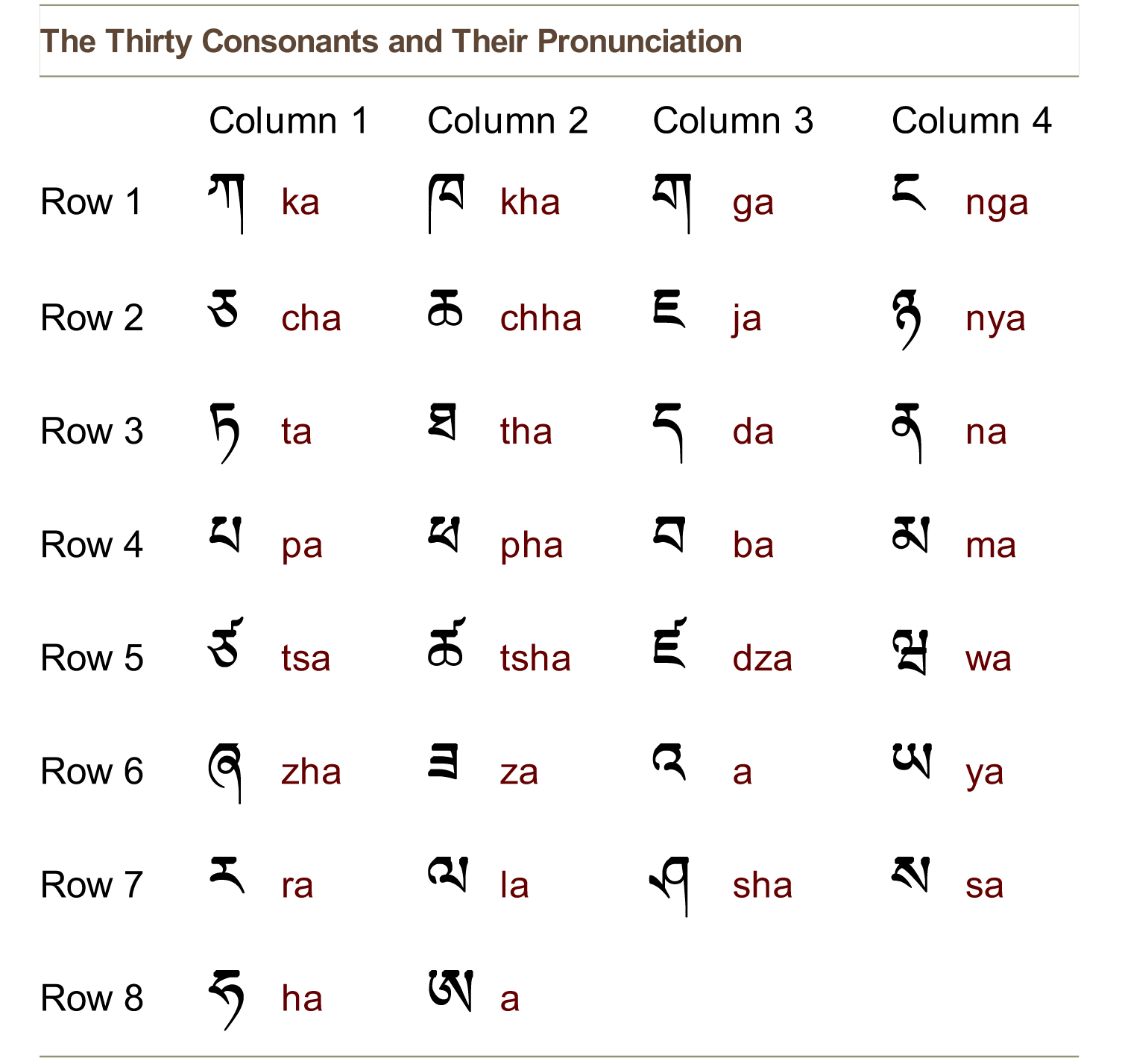
Alfabeto Tibetano
Teaching THDL Extended Wylie by ALEXANDRU ANTON-LUCA Overview This is an instructional manual for teaching the extended Wylie transliteration system to speakers of Tibetan languages. It provides structure for instruction and suggestions for how to thoroughly teach the Wylie system.

Pin by Yakky Feijen on Tibetan fonts Sanskrit words, Tibetan symbols, Alphabet
A New Look at the Tibetan Invention of Writing 45 A New Look at the Tibetan Invention of Writing Sam van Schaik Tibet is one of many cultures that attribute the origin of their writing system to the heroic actions of a single figure.1 In Ancient Bablyonia, the god Nabu, keeper of the 'Tablets of Faith', was considered the source of the art of writing, while in Ancient Egypt the god Thoth.

Tibetan Calligraphy, Part 1 The Wisdom Experience
In this video, I show how the Tibetan writing system worked at its beginning, and justify the idiosyncrasies of the Modern Standard Tibetan writing system by.
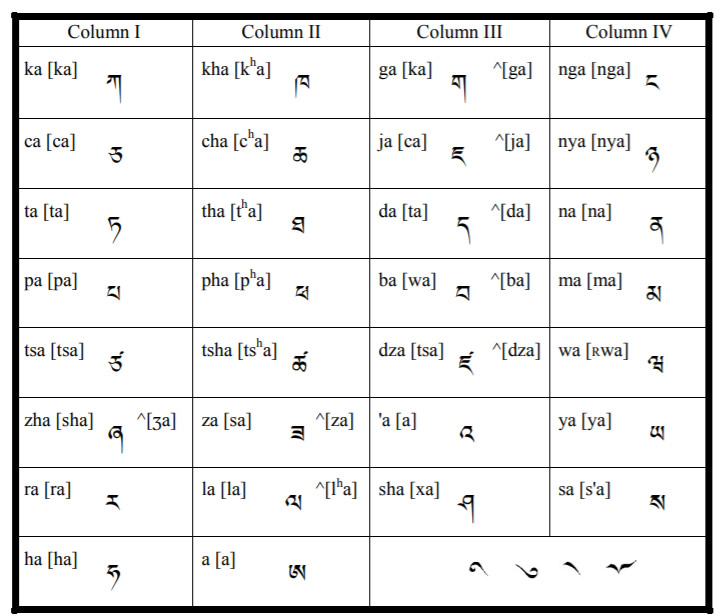
Tibetan Pronunciation Alphabet and Pronunciation
Tibetan Writing System Omniglot.com has an informative page about Tibetan which gives an overview of the language, the alphabet and writing system in general. Sample texts and sound recordings of the Tibetan language are provided in this resource. Other materials include a sample translation from Tibetan to English.

About Tibet interesting facts about Tibetan plateau Wonders of Tibet
1. Introduction to the Tibetan alphabet 2. Overview of the 30 consonants 2.1. The default "a" 3. The eight rows of consonants 3.1. The first row 3.2. The second row 3.3. The third row 3.4. The fourth row 3.5. The fifth row 3.6. The sixth row 3.7.

The Art of Tibetan Writing. Norlha
This document is produced by the Chinese Layout Requirement Task Force in the W3C i18n Activity, which is focusing on language layout requirements for languages used in China, but wishes to also incorporate information relevant to the use of Tibetan in other places around the world.
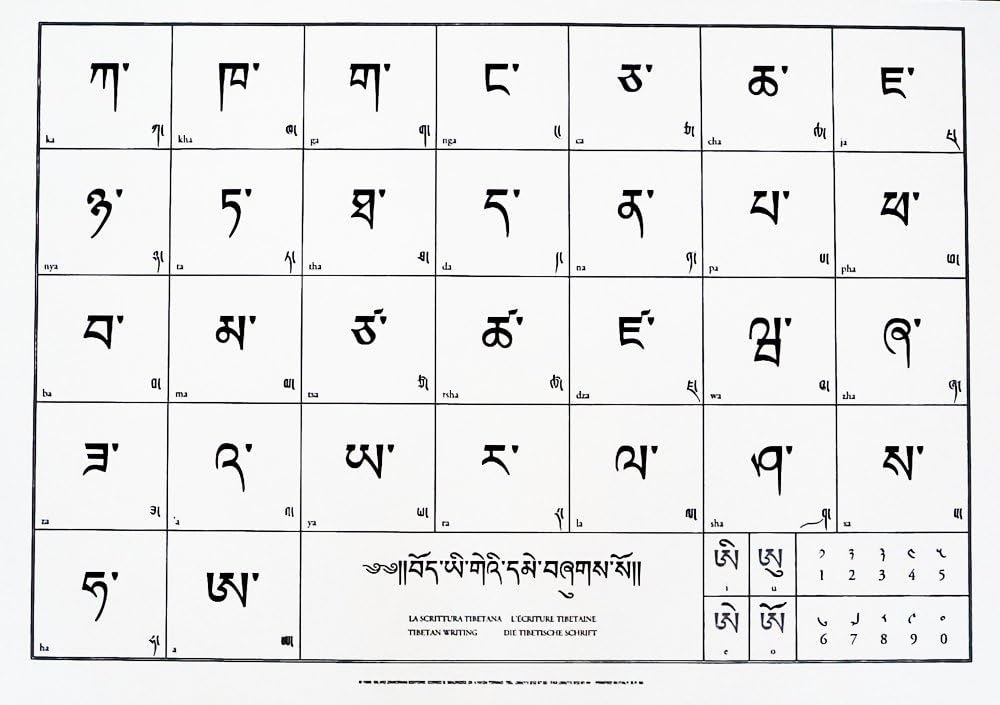
The Tibetan Alphabet. Poster 50 x 70 cm Amazon.co.uk Kitchen & Home
U-me style has seven writing scripts. (1) Petsug script. "Pe" refers to the Buddhist text and "tsug" means "solidity". Therefore, Petsug means a solemn script used for the writing of the Buddhist text. If the bottoms of all the letters are written at the same level, as if they were neatly cut with a knife, they are called "neat.

Interactve Tibetan 1
Tibetan is written in a variety of different scripts. The one most commonly seen in the traditional Buddhist texts is call u-chen (pronounced "oo-chen"). It is also the script used in all Western Dharma center editions of practice texts when the original Tibetan is included. U-chen is also the script used in all the Tibetan-English dictionaries.
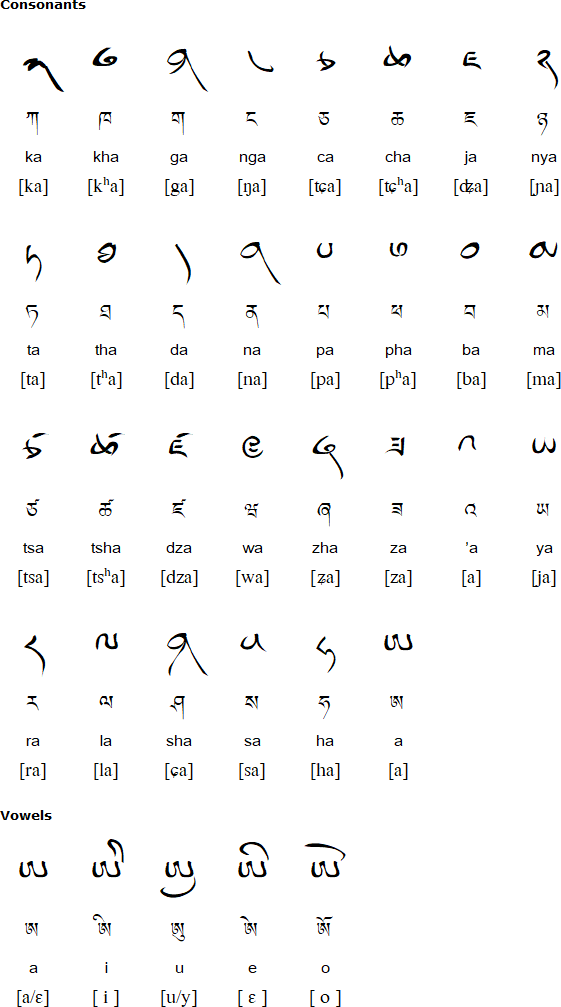
Tibetan alphabet, pronunciation and language
The Tibetan script is a way of writing that is used for different Tibetic languages like Tibetan, Dzongkha, Sikkimese, Balti, Ladakhi, and Purgi. It's also been used for some languages not from Tibet but close to its culture, like Thakali, Sanskrit and Old Turkic.

The Tibetan Writing System and Change YouTube
Classical Tibetan refers to the language of any text written in Tibetic after the Old Tibetan period. Though it extends from the 12th century until the modern day, [1] it particularly refers to the language of early canonical texts translated from other languages, especially Sanskrit.

TIBET CONSCIOUSNESS PRESERVE TIBETAN LANGUAGE Tibetan script, Language, Tibetan
The Tibetan script is a segmental writing system ( abugida) of Indic origin used to write certain Tibetic languages, including Tibetan, Dzongkha, Sikkimese, Ladakhi, Jirel and Balti. It has also been used for some non-Tibetic languages in close cultural contact with Tibet, such as Thakali and Old Turkic. [5]

How to write and read Bhoti {Tibetan} alphabet part 1 YouTube
The Tibetan alphasyllabary is the writing system used to write the Tibetic languages such as Tibetan, Dzongkha (Bhutan), and so on. An alphasyllabary, or abugida, is a segmental writing system in which consonant-vowel sequences are written as a unit: each unit is based on a consonant letter, and vowel notation is secondary.

Alfabeto Tibetano
Apple's Tibetan language system was designed in the 1980's by a collaboration between a former Apple programmer named Steve Hartwell and the Tibetologists Tsuguhito Takeuchi and Yoshiro Imaeda. The project was supported by the government of Bhutan and by Otani University in Japan.. The Tibetan alphabet has a range of special letters and.
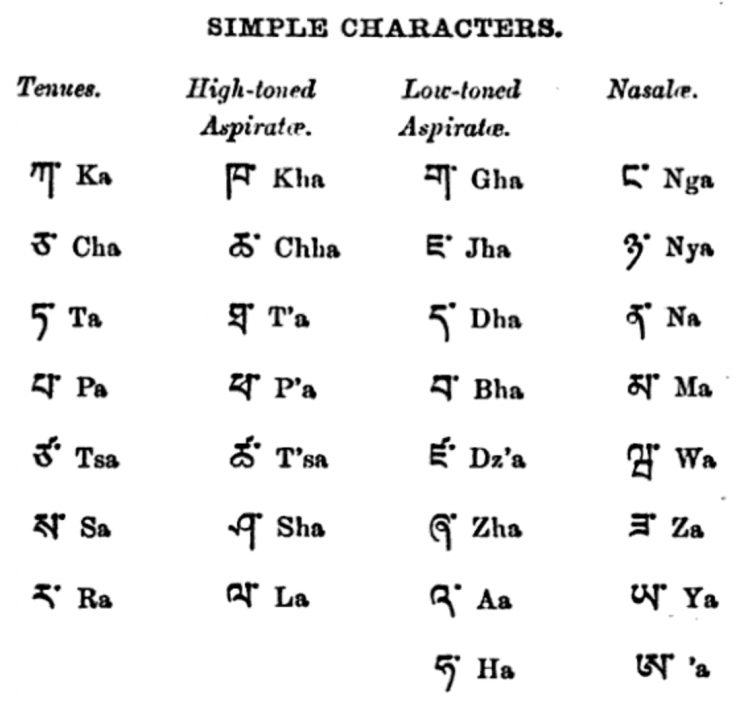
Tibetan/Grammar LING073
Umê ( Tibetan: དབུ་མེད་, Wylie: dbu-med, IPA: [ume]; variant spellings include ume, u-me) is a semi-formal script used to write the Tibetan alphabet used for both calligraphy and shorthand. The name ume means "headless" and refers to its distinctive feature: the absence of the horizontal guide line ('head') across the top of the letters.

Tibetan Alphabet, UChen script alphabet, Fonts alphabet, Alphabet
2010, On Characters of Tibetan Writing System: Alphabetic Characters, Pronunciations, ISO Codes, Frequencies, Sorting Orders, Picture Symbols, and Transliterations Alphabetic Characters, Pronunciations, ISO Codes, Frequencies, Sorting Orders, Picture Symbols, and Transliterations See Full PDF Download PDF Related Papers
